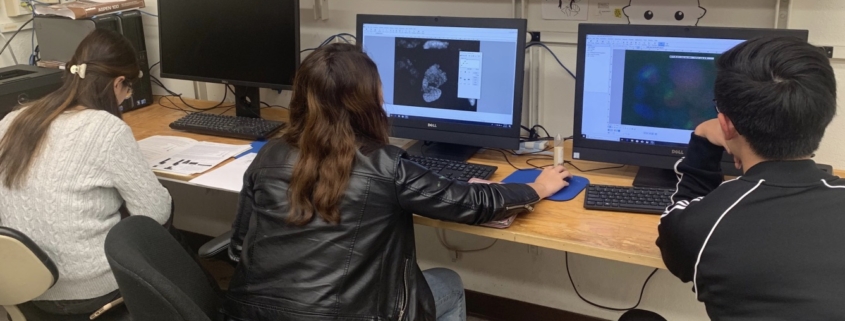245 UCLA undergraduates and 31 high school students co-author a scientific paper on embryonic tissue development

November 2019
The UCLA Minor in Biomedical Research is excited to announce a publication in the journal G3: Genes Genomes Genetics, reporting data collected by 245 UCLA undergraduates and 31 high school students, all of whom are coauthors of the work. For this publication, students used the fruit fly, Drosophila melanogaster, to see which genes were expressed within the different cell types, and how this changed over the course of development. Drosophila is a well-established model system, and the basic molecular mechanisms controlling its development are very similar to that of other animals, including humans. In completing this work, students examined the gene expression patterns of greater than five hundred genes, analyzing over 50,000 microscopic images.
In addition to the scientific data, this paper also highlights the beneficial impact that course-based research experiences can have on student outcomes, including persistence in STEM: Science Technology Engineering and Mathematics. Students participated in this research through the Undergraduate Research Consortium in Functional Genomics (URCFG) and the Biomedical Research (BR) 10H course, both of which were developed by Professor Utpal Banerjee and supported by the Howard Hughes Medical Institute Professors Program. The instructors leading the course BR 10H and the lead authors of this latest G3 paper are Drs. John Olson and Cory Evans.
BR 10H is a recruitment course for students to join the Minor in Biomedical Research a free standing minor in which independent research is supported by an interdisciplinary curriculum that fosters critical thinking and an appreciation of the relationship between science and society. The Minor is housed within the Division of Life Sciences. The Chair and Director of the Minor in Biomedical Research is Professor Tracy Johnson. Dr. Ira Clark is the Associate Director.
The paper “Expression-based cell lineage analysis in Drosophila through a course-based research experience for early undergraduates” is available online at G3 (doi: 10.1534/g3.119.400541). And the data has been compiled into an online database (G-TRACE Expression Database) that serves as a resource for the Drosophila research community.




